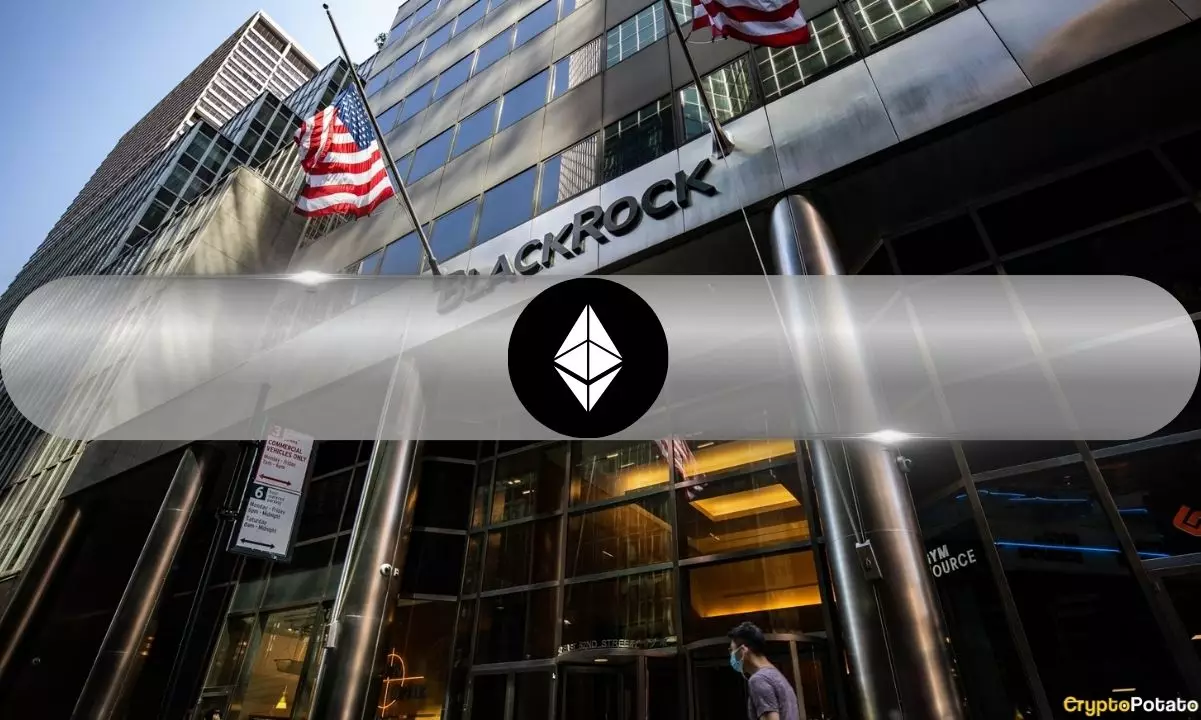In a move that could redefine asset investment paradigms, BlackRock, the financial titan, is gearing up to tokenize a staggering $150 billion from its Treasury Trust market fund. This is no mere experiment; it is a statement of intent. Former Ethereum developer Eric Connor couldn’t have been clearer — Ethereum has just “scored a monster win.” This strategic decision underscores a staggering evolution in traditional finance, as one of the world’s most powerful asset managers places its bet squarely on a blockchain ecosystem that many still underestimate.
The implications of tokenization are vast and multifaceted. The decision to use Ethereum for trade and ownership tracking isn’t simply about adopting new technology; it signifies a fundamental shift in how large financial institutions are approaching investments and liquidity. With BlackRock’s foray into the realm of decentralized finance (DeFi), skepticism about the sustainability of blockchain technology is swiftly fading. Tokenization isn’t just an internal restructuring; it suggests a broader acknowledgment that the future of asset management may indeed demand more transparency, efficiency, and speed than traditional systems can offer.
The Mechanics of Tokenization: An Investor’s Dream
At the heart of this revolution lies the tokenization of real-world assets (RWAs). BlackRock’s move to create digital liquidity via blockchain confirms that institutions are attentive to the inefficiencies of current settlement processes. CEO Larry Fink’s assertion that “transactions that currently take days would clear in seconds” is both aspirational and grounded — it reveals a growing urgency to rectify a system mired in legacy practices.
Furthermore, the potential economic implications are staggering. In a world where funds can be immobilized due to long settling times, the ability to reinvest billions immediately back into the economy can significantly drive growth. It’s a departure from the antiquated ways of doing business, moving towards an instantaneous economy fueled by Ethereum’s capabilities.
The substantial $2.34 billion already being managed through Ethereum confirms the platform’s market dominance in the nascent field of asset tokenization. Moreover, with research suggesting that 93% of the BlackRock USD Institutional Digital Liquidity Fund is tied to Ethereum, it becomes clear that institutional players are no longer hesitant about diving into the depths of blockchain.
The Market’s Reluctance: Why Ethereum Deserves Better
Intriguingly, despite all these positives, ETH prices remain stagnant, hovering around bear market lows. As of now, Ethereum’s value is a staggering 63% less than its apex in 2021, raising questions about the market’s perception of this technology. As retail investors and enthusiasts chase the next digital currency wave, the potential shown by Ethereum seems overshadowed by fear and market skepticism.
However, it’s here that true investors will recognize an opportunity. The fact that institutional players like BlackRock are strategically acquiring Ethereum assets, despite the price stagnation, discernibly positions them as forward-thinking entities set to capitalize on Ethereum’s long-term promise. Analysts and crypto advocates alike echo the belief that Ethereum’s price will soon reflect its foundational strength and fundamental backing.
The Power of Institutional Influence
When BlackRock entered this space, they weren’t just making a transaction; they were cementing a shift in institutional ethos. Institutions thrive on liquidity, credible assets, and robust security — and within these criteria, Ethereum is emerging as a beacon. The growing involvement of large corporations suggests that Ether could soon experience a resurgence, catalyzed by BlackRock’s strategic decision.
In essence, BlackRock’s audacious exploration into tokenization isn’t just a transformative moment for Ethereum but a broader renaissance for blockchain technology’s legitimacy in the world of high finance. With their commitment to ETH, they are sending a signal to other institutions: Ethereum is not just a peripheral player; it is at the heart of the financial future.
As we witness this narrative unfold, it becomes increasingly clear: the market’s current indifference towards Ethereum is an anomaly. The true momentum resides beneath the surface, and as both traditional and modern financial practices continue to collide, we are marked not by a passive acceptance of the status quo but by an eagerness to embrace the revolution that awaits.


Leave a Reply